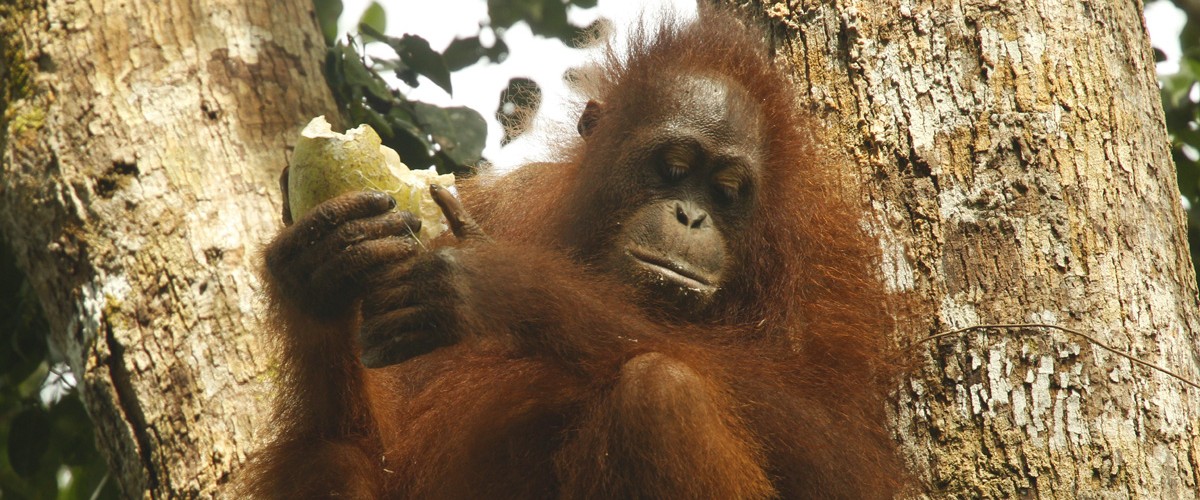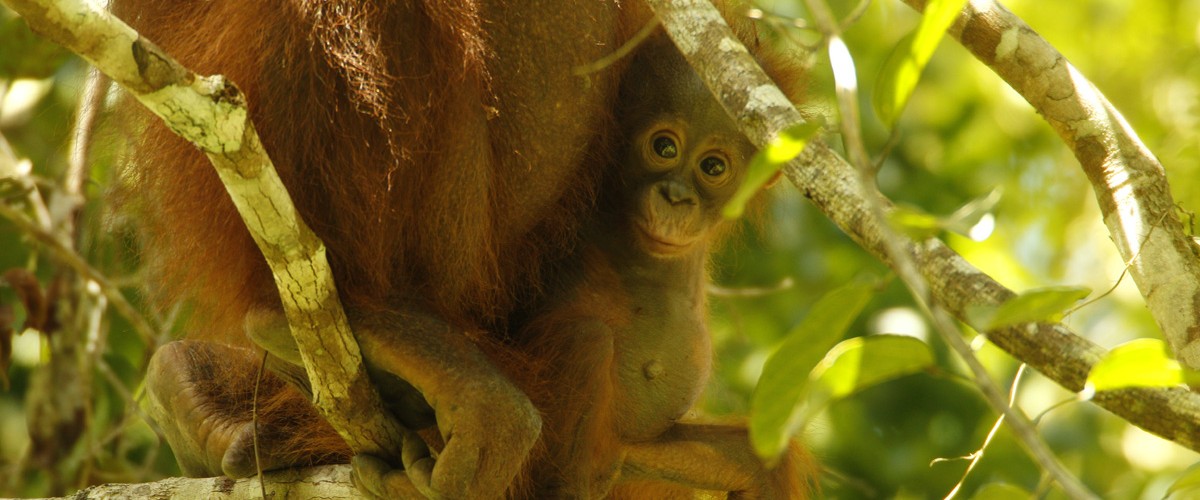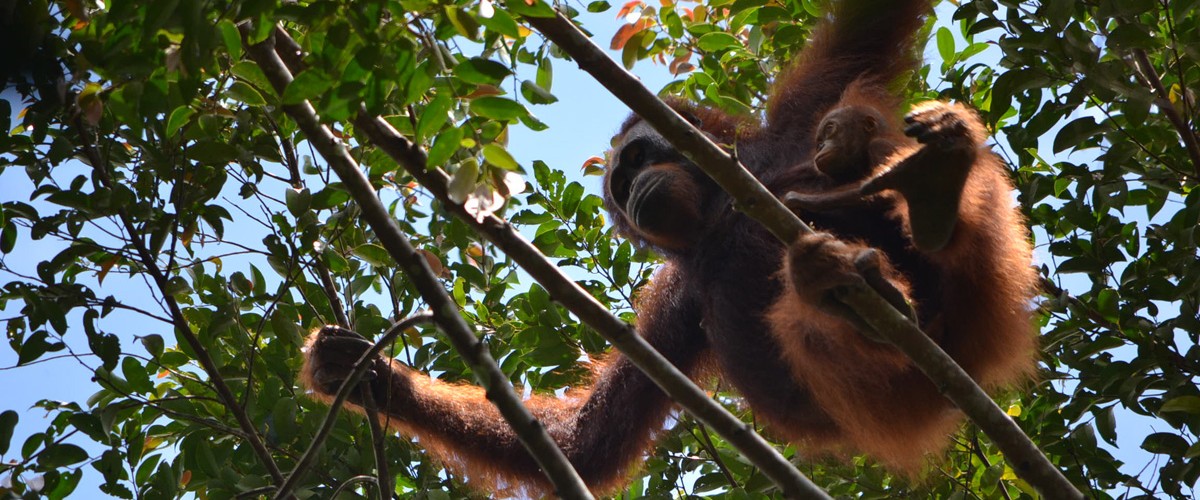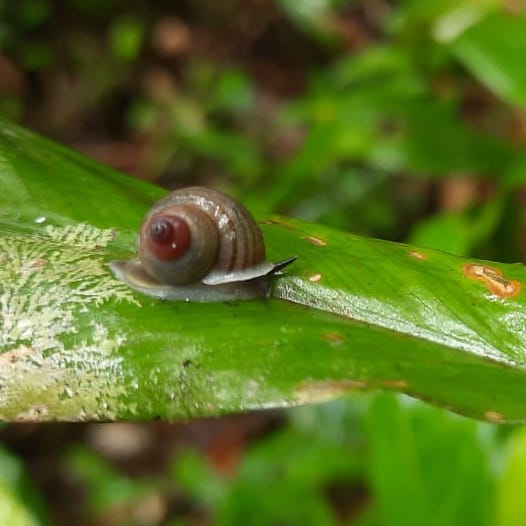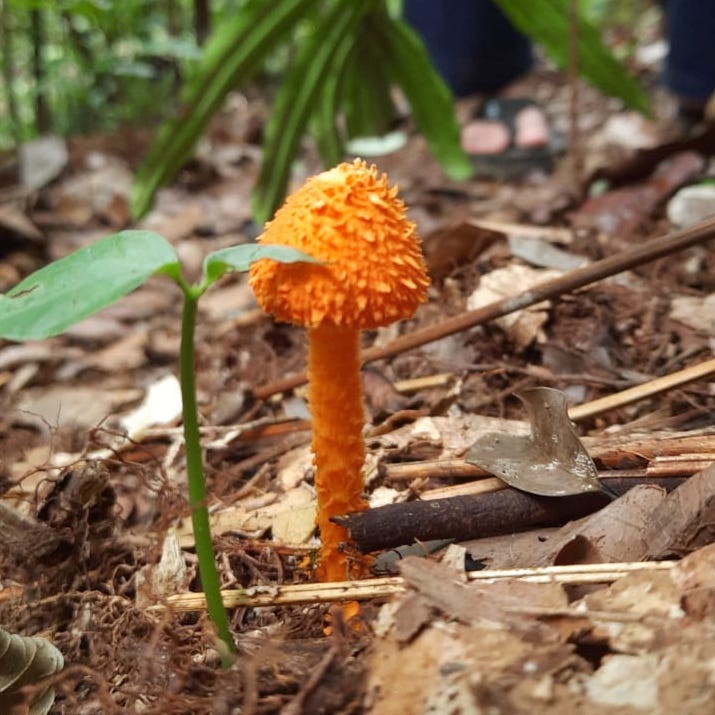By Muhamad Alfikri, Student Researcher
How do you imagine the Bornean tropical rainforest? Towering trees? Diverse animals? Orangutans swinging from tree to tree? Unpredictable rain? Or peat soil with red water? All these are things I have encountered at the Cabang Panti Research Station, in Gunung Palung National Park, West Kalimantan (Borneo).
Hello, my name is Muhamad Alfikri. I am a student in the Faculty of Biology from the National University (UNAS) in South Jakarta. Through this article I will share my experiences during my research in the Kalimantan forest.
My journey to reach the land of Kalimantan began with an offer from my professor, Ibu Sri Suci Utami Atmoko. People who work in research and conservation know her as an expert orangutan researcher. I am also working with Pak Endro Setiawan, who works in Gunung Palung National Park and is a Master’s degree student at UNAS. Pak Endro, or Mas Endro as I usually call him, is conducting research on the diversity of plant species in Gunung Palung. In addition to helping him do his research, I am now carrying out my own research on orangutan habitat vegetation, to see habitat conditions and also the availability of food trees for orangutans.

My work takes place in a forest area around the Sungai Rangkong (Rangkong River). We call this general area the Rangkong for short. The Rangkong is a separate area from the main Research Station study area, because it is a degraded forest, closer to the edge of the National Park. While at the Rangkong, I have been accompanied by a team of 7 people, namely Pak Herman, Pak Lande, Pak Bacong, Bang Andre, Rani, Noko, and Mas Endro. During the first week of activities at the Rangkong, we set up camp on the riverbank. The trip from our camp to the location where we collect data is sometimes as far as 2 km away, through swamps and across rivers. Unpredictable rain became our challenge while working, because heavy rains made the river’s height increase and the swampy land became flooded. One thing that I find the most fun about staying in the forest is that we always come together to socialize and eat our meals at the end of the day. Without cellphone signal or other luxuries that I’m used to in the city, I get even more pleasure from the simple things.
You may be wondering how do you see whether a forest area is in good condition or not? One way is to observe the various types of plants that live and grow in the forest. During the first week in the Rangkong, I learned to collect phenological data on the plants present within tree plots. Each plot is 200m2. Each tree had already been identified, but we continued by measuring the diameter at breast height (DBH) of each stem, the total number of plant species within one plot, and the presence and condition of any fruit growing on trees. We did this in the three different habitat types within the Rangkong, which are peat swamp, kerangas (heath), and alluvial forest.

After one week of activities at the Rangkong, I went to the Cabang Panti Research Station, about a 1.5-hour walk further into the forest. The first time I arrived, I was quite amazed by the condition of the research camp. The building conditions at the camp are very nice. There is even a lab to carry out research activities. The workers, assistants, and officers from the National Park are all very friendly. Jokes can be heard every night and also everyone who lives there always gathers during dinner time, making a warm nighttime atmosphere.
While at Cabang Panti I learned to search for orangutans. Normally, each field assistant searches in the forest from 8am to 3pm. If an assistant finds an orangutan, he will follow the orangutan until nighttime, when it finishes building a nest to sleep in. The next day, three assistants will wake up at 3am and go to the location of the nest where the orangutan is sleeping, arriving before the orangutan wakes up. Assistants follow the orangutan for the whole day, while collecting data on all the activities that the orangutan does, and collecting samples of food, feces, and urine. This continues for the next 5 days and when the last day arrives, the orangutan will stop being followed.
What I enjoy most when participating in orangutan follow activities is observing their behavior. Do you know what orangutans do when it rains a lot? In the past, I could only watch from behind a television screen to see orangutans turning tree branches into umbrellas, protecting them from rainwater. I will never forget my experience of seeing orangutans doing this right before my eyes!

Another thing that is exciting is seeing female orangutans with their offspring. The baby orangutans are very cute, and almost look like human babies. It makes me sad to think that hunters kill these beautiful creatures, or unethically take babies away from their mothers.
I have also learned a lot about the names of plant species. To identify a plant, we can look at its physical characteristics, such as leaf shape, leaf location, flower shape, stem color, and the smell of the plant’s sap. There are many types of plants that can be found in Gunung Palung National Park. I have also learned that each habitat (there are 8 habitat types in Gunung Palung) has its own types of plants that are rarely found in other habitats.
There are so many other things that I have experienced here that I can’t begin to describe them all. I still have a long time left and I look forward to conducting the rest of my research. I hope that my story has given you a sense of the amazing experiences that I have had living in the rainforest of Gunung Palung National Park.
